After a long winter of mainly sheltering indoors and taking local walks, my daughter and I recently started taking weekly trail hikes in park areas along the lower Hudson Valley, a welcome break from our urban environment.
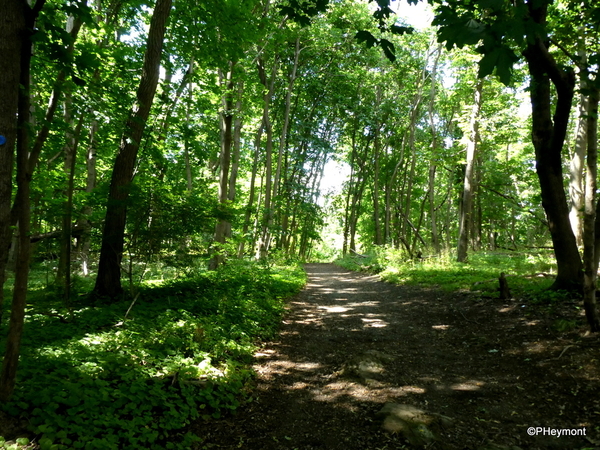
But we soon discovered that it was not as much of a break as we expected: Much of the park land and public forests in the region isn't 'the forest primeval' at all, but rather recycled industrial America.
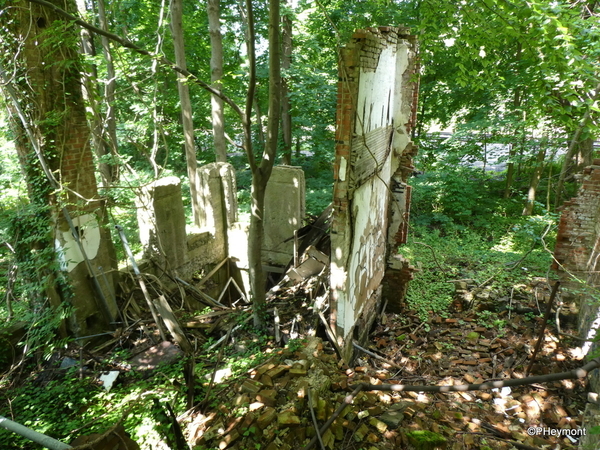
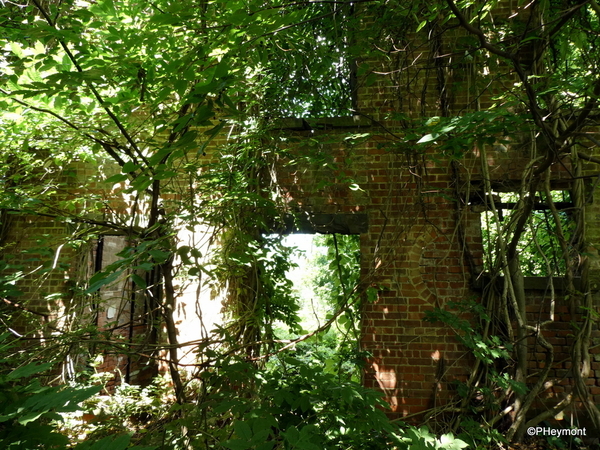
Ruins believed to be the old Arden Hotel lie along the first part of t he trail
And that, in itself, makes the experience even more interesting, giving me a few new historical and social puzzles to think on.
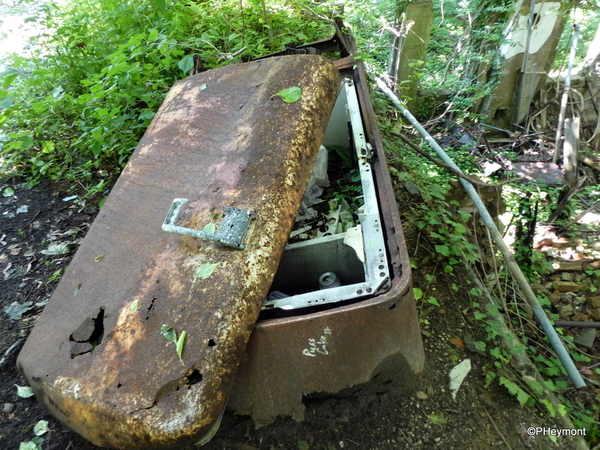
Older but more recent ruins nearby.
Our first destination was the Arden Point trail in Hudson Highlands State Park, starting from the commuter rail station in Garrison, New York, with parking at the station.
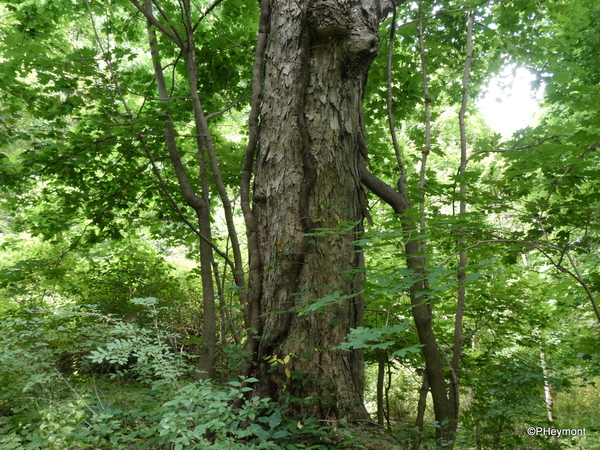
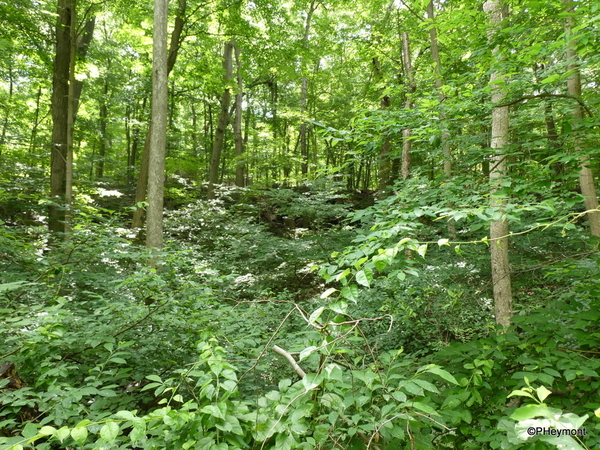
'Old Growth' isn't very old in this regenerating forest; few really old trees, and a lot of undergrowth and ground cover.
But a moment for Hudson Highlands State Park. It's not what it sounds like. It's actually a string of land stretching in bits and pieces for about twenty miles along the Hudson River and just inland from it. It's only existed since the middle of the last century, only reached its current size a few years ago, and still has plans to grow, especially since it has many gaps.


The area along the river seems sleepy these days, but for three centuries it was part of a main trade route into interior America and a center of agriculture and industry. The whole region is dotted with remnants of the days when it was one of the nation's most heavily mined, farmed, quarried and built-over areas.
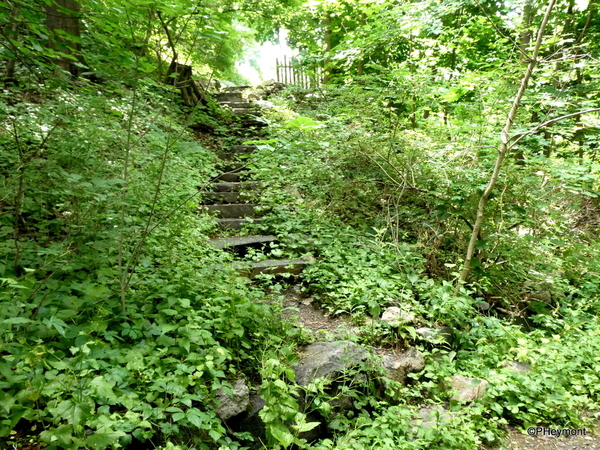
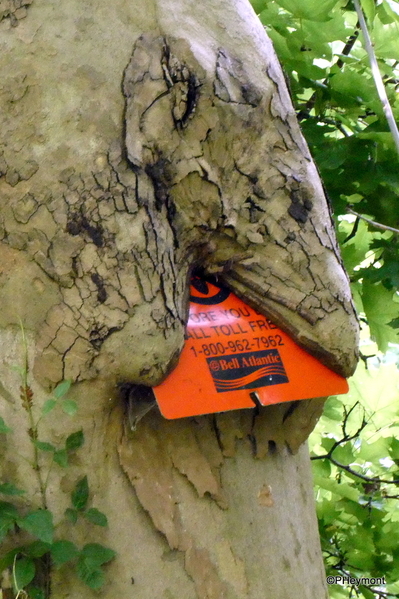
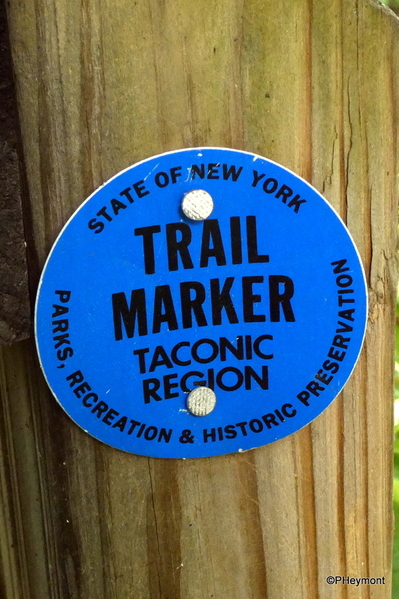
Steps lead to private land outside the park. The trails are well marked, but if the image on the left is an omen, that might not be true forever!
Cannon were forged here during the revolution from iron mined nearby. Some of the mountain profiles we see today, there and across the river in the more famous Palisades, were shaped not by nature but by quarrymen.
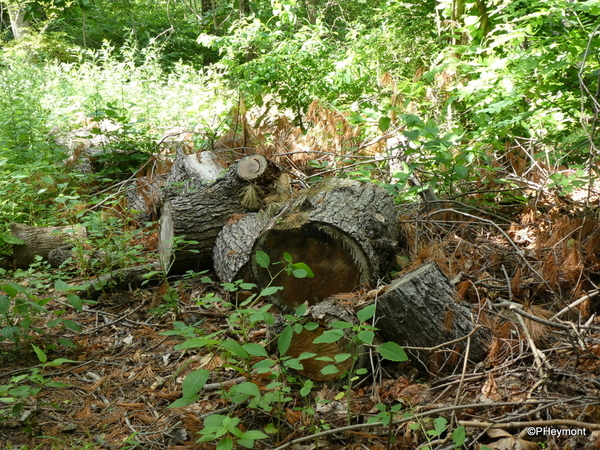
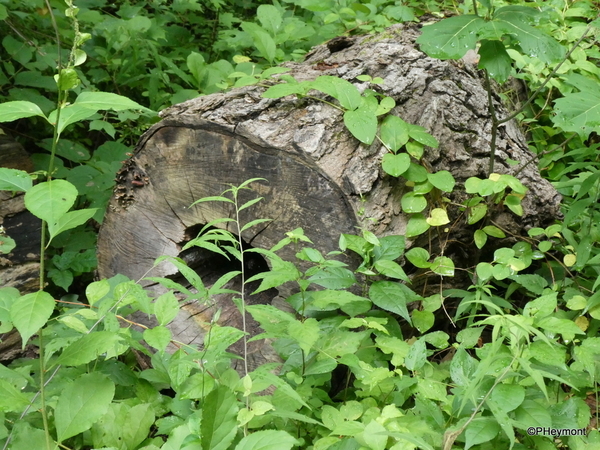
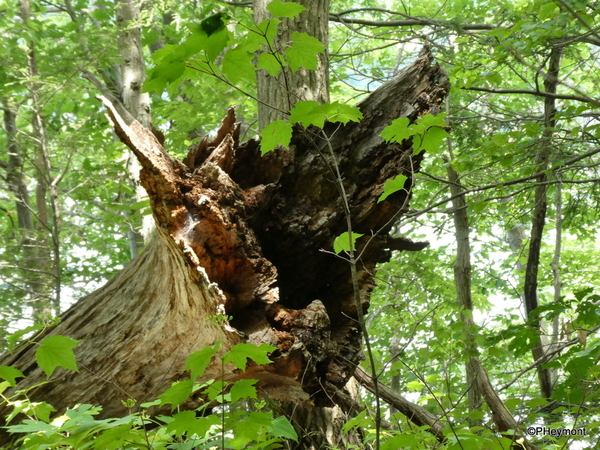
Deadfalls along the trails have been cut up or just left to decompose.
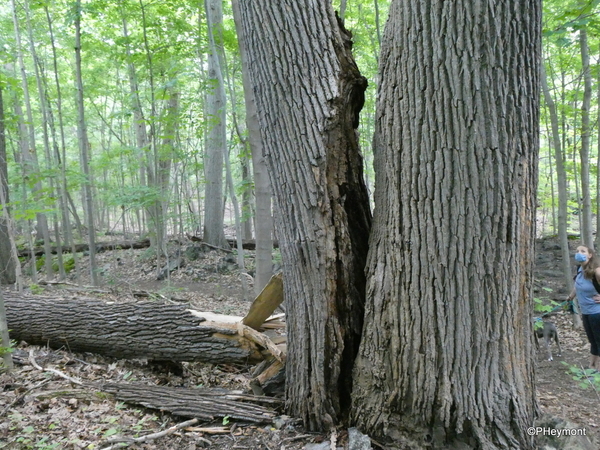
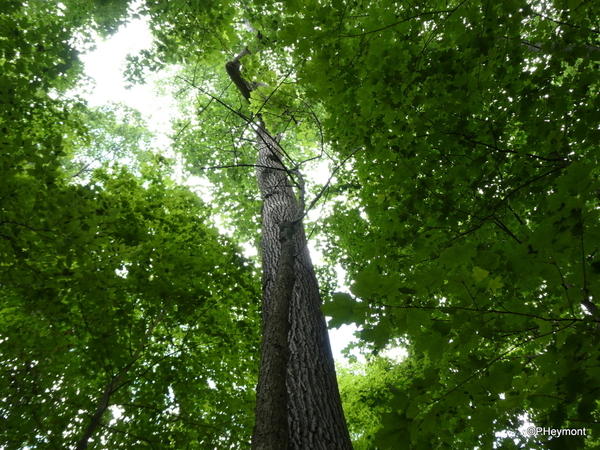
And some refuse to die. The tall trunk with full crown above is growing from the root of the tree above, apparently split by lightning.
By the early years of last century, the resources were running out and the Erie Canal and the river were no longer as central to transportation. And the rich families who had built impressive estates along the river in other sections began looking in other directions.
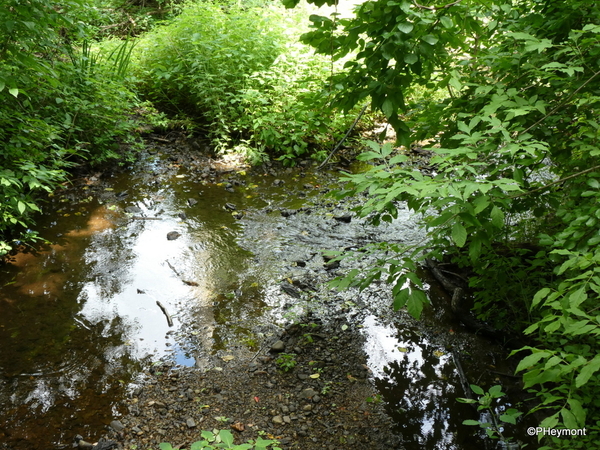
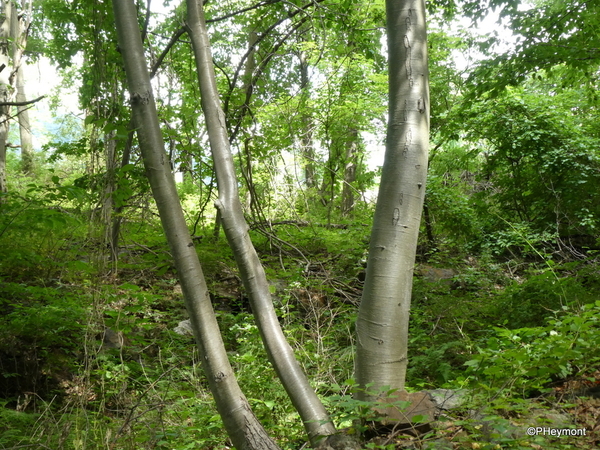
A small stream and an elegant silver birch
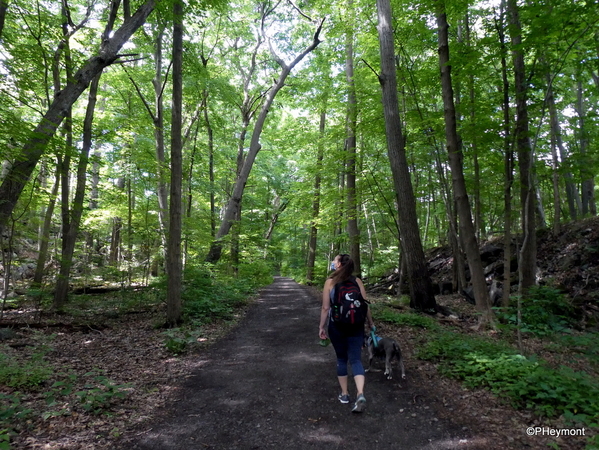
William T. Howell, who began to hike the area around then, including areas where forest was reclaiming former industries, started the movement to keep the area for parks and hiking in 1910, when he wrote:
There is but one perfect solution as to the preservation of the Highlands, though I know in my heart that it will never be realized. That is, to leave them alone. By that I mean, keep out all foreign influences. That means more than quarries and manufacturies. It means hotels and parking projects, and even ... roads and easy paths. There is something more at stake here than the preservation of the scenery ... There is a wild charm and isolation about the Highlands that will fly forever when the "improvements" begin to come in.
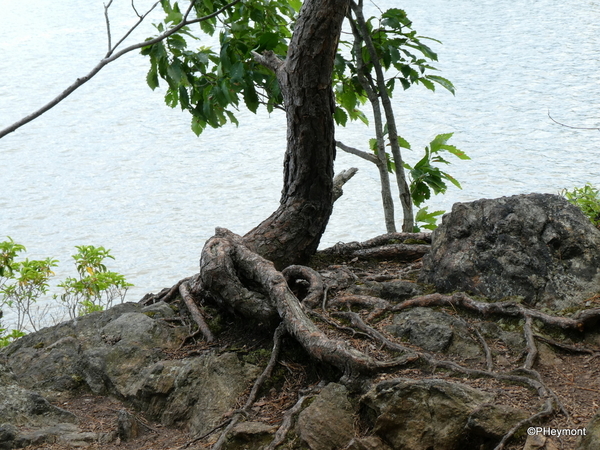
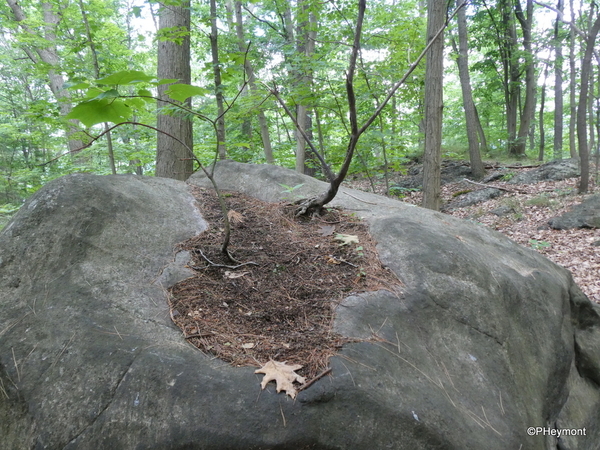 More survivors: a tree hanging onto the edge of a cliff, and a small tree that has rooted itself through a hole in a large rock
More survivors: a tree hanging onto the edge of a cliff, and a small tree that has rooted itself through a hole in a large rock
Conservationists began to push the state to save the abandoned or available spaces from development. In 1936 and 1938, the Hudson River Conservation Society acquired two tracts, totaling about 375 acres. Foreshadowing future pieces, one was a private estate, the other former commercial lands.
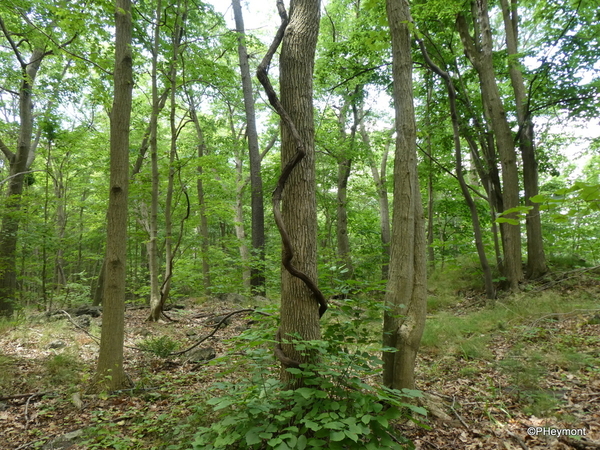
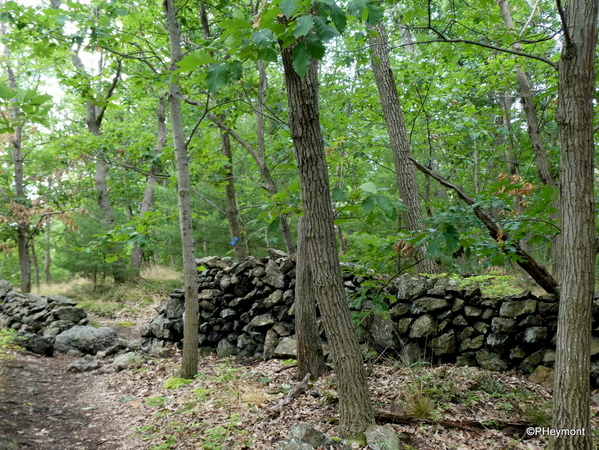
An old stone wall, running for perhaps a hundred yards testifies to past farming; it's been disrupted to allow the trail to pass through.
Little more happened until the 1960s, when attention was focused on the area after Con Edison, an electric utility, was defeated in its plan to hollow out Storm King Mountain for a hydroelectric plant. The project would have also spanned the river with huge cables anchored in what is now part of the park. Some have argued that the years-long campaign against Storm King was the start of the environmental movement.
From then until the 1990s, the state actively accumulated more of the land, and the area became a mecca for hikers. More pieces are possible, although one is currently blocked by a campaign to save a rattlesnake habitat.
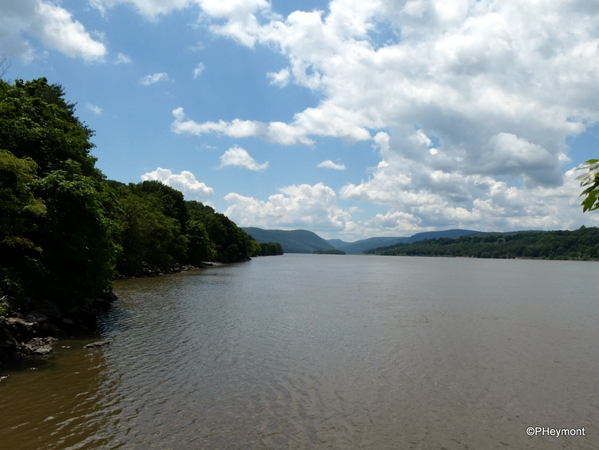
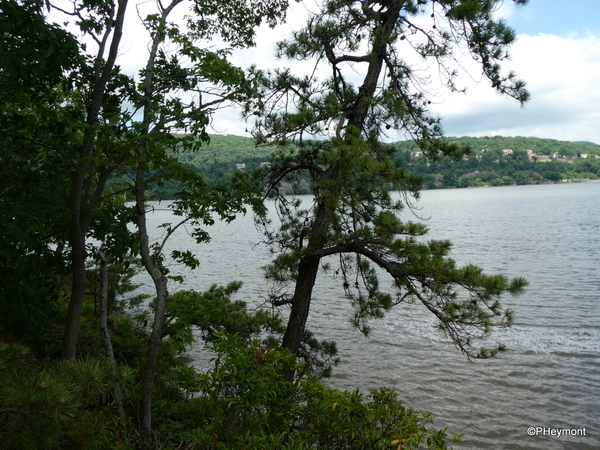
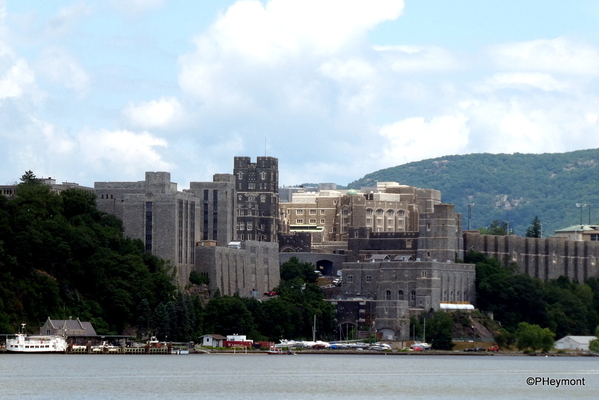
At the end of the trail, views of the river and across to fortress-like West Point
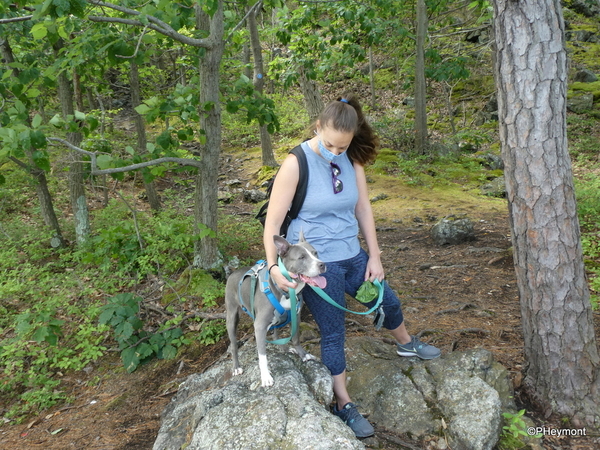
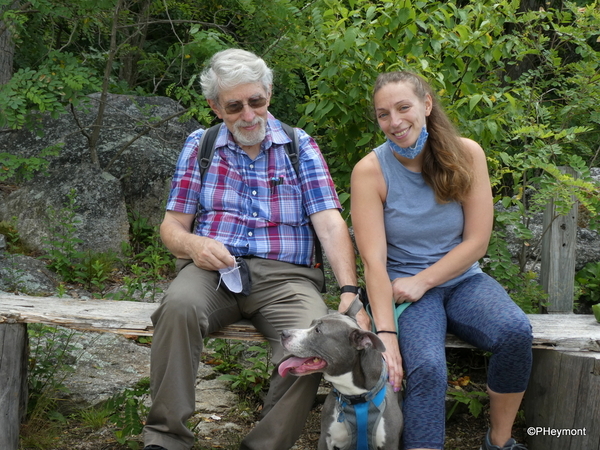
And a break for lunch at a waterside bench before reversing the trail back to the station.
If you're going...
The various parts of the park are conveniently spread out along the Metro North commuter rail line, as well as being accessible by highway. Trains leave from Grand Central Terminal in New York; some small stations have special weekend-only service for hikers. Dogs on leash are permitted.
There are no fees for the park or trails, but there is not always free parking. Parking for Arden Point at Garrison station is free on weekends.
More information and maps is available at the website of the New York New Jersey Trail Conference

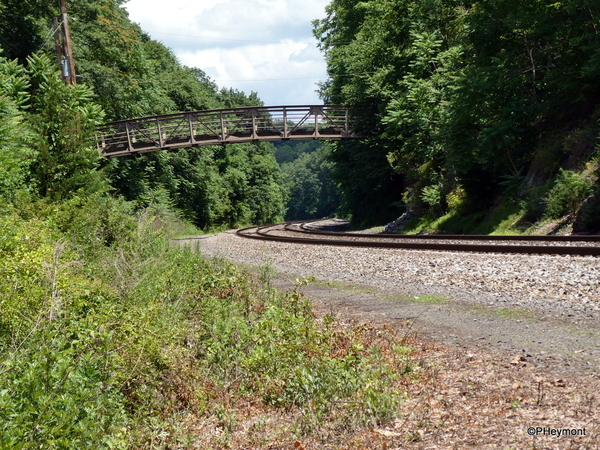
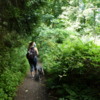

























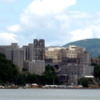




Comments (0)